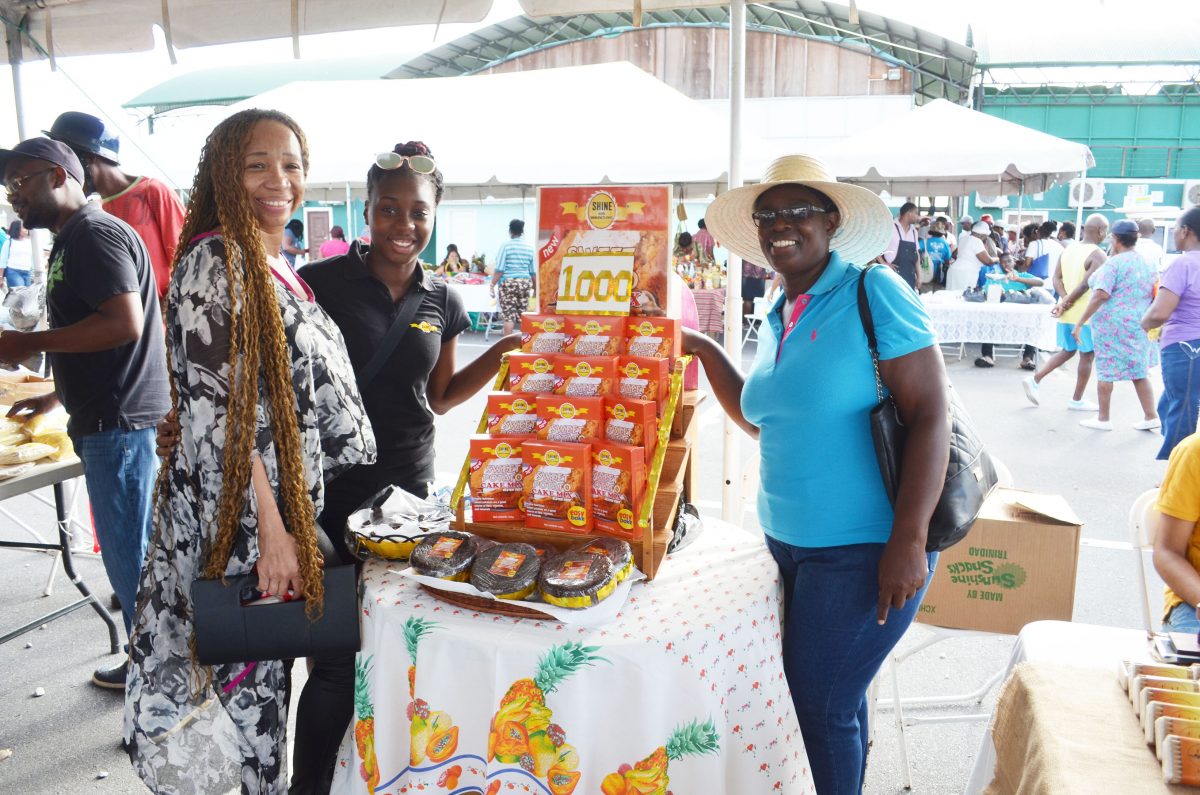If the Guyana Marketing Corporation (GMC) can claim to have attracted a fair measure of public attention and patronage at last Saturday’s final Farmers Market for 2019, it must surely be aware that it will have to set the bar somewhat higher next year if it is going to be able to lay legitimate claim to helping to create an expanded market for the increasing volumes of local agro produce, condiments and cosmetics being produced in Guyana.
A farmers’ market is a retail ‘space’ established to allow farmers and other vendors to sell foods which they produce directly to consumers, its advantage reposing first, in the removal of the ‘middle man’ and secondly the opportunity it affords for the informal marketing of business ventures that might find conventional advertising unaffordable. Farmers’ markets may be indoors or outdoors and typically consist of booths, tables or stands where home-grown produce is made available to consumers.
As is customarily the case, last Saturday’s Farmers Markets attracted a few hundred shoppers (the staggered nature of the arrivals made an accurate number difficult to determine) who seized the opportunity of the event to depart from the routine of doing their shopping at one or another of the municipal markets. It is a different kind of ‘market day’ that affords unfamiliar vendors, with different offerings. Last Saturday, particularly, provided a greater opportunity to browse and buy from the forty-five agro processors whose numbers alone accounted for more than half of seventy-four vendors who had ‘set up shop’ at Durban Park as early as 6 am. The rest of the ‘Market’ comprised eleven fruit and vegetable farmers, three fish and meat vendors, six horticulturalists and a further six craft producers. A further six cooked-food vendors appeared to be doing brisk business with patrons in search of an early morning meal.
The real value of the Farmers’ Market is twofold. Setting aside the opportunity it affords for a different shopping experience it also allows a routine (not regular but routine) opening for emerging businesses to parade their goods before a sizeable even if not particularly large market. Encounters of that kind, depending on the outcomes, can be considerably confidence-building. Locally, the event also allows, particularly, for part of the country’s fast-emerging agro-processing sector to parade what, in recent years, has been its considerable success. A far from exhaustive last of agro-processed commodities displayed for sale at Saturday’s Farmers’ Market include food flavourings and condiments, casareep, honey, wines, coconut oil, soaps, teas, energy bars, cakes, cassava bread, and juiced concentrates. All of these, either significantly upgraded offerings from a few years ago or else new products catch the eye on account of their continually improving packaging and labeling. These days it is the marketing rather than the production of our agro-processed goods that lags behind.
Perhaps understandably the extent of customer appeal is still largely confined, in many instances, to patronage, the push to rival and eventually surpass the demand for their imported counterparts still encountering strong resistance from die-hard believers in imported brands.
On the whole what the ‘numbers’ show is that the GMC’s Farmers’ Market is still a matter of ambition rather than overwhelming accomplishment. Information provided us by the GMC (products from Regions Two, Three, Four, Five, Six and Ten were available at last Saturday’s Farmers’ Market) pointing to the fact that access to coastal markets for farm goods, craft and agro-processed items produced in hinterland communities remains limited. The challenge of turning that around lies, admittedly, beyond the scope of the GMC, though the issue is worth mentioning here if only because the remedy has to start somewhere.
Once you probe the ‘engine room’ of the GMC’S Farmers Market some important issues arise…like complaints from rural farmers about what they say is the high cost of bringing their goods to market in the capital and the still limited numbers of patrons who show up at D’Urban Park on market days.
On the other hand, the expanded range of locally produced goods that continue to materialize at Farmers’ Markets is, in itself, a modest tribute to the achievement of the event. On Saturday the list of items on offer included an assortment of sauces, spices, honey, preserved fruits, wines, oils, candles, soaps, teas, snack foods, juices, concentrates and cosmetics. The farmers, meanwhile, ‘chipped in’ with their fruit, vegetables, meats and eggs.
The range and quality engender the reassuring feeling that these sectors are holding their own, notwithstanding the challenges which the producers of these commodities, mostly emerging entrepreneurial ventures, continue to experience particularly with financing the establishment of their ventures and afterwards sustaining them.
Not that the event itself is still not fraught with limitations. Those that come easiest to mind are the difficulties associated with affording goods produced in non-coastal markets access to the Farmers’ Market; the affordability of vendors moving their produce over considerable distances to what is still the event’s sole site, D’Urban Park. It would be good if, sometimes, the market could be shifted outside of the capital, affording rural businesses more opportunity to offer their goods to larger markets. Then there is the perennial problem of limited volumes…on Saturday it seemed apparent that the demand for fruit and vegetables might have been somewhat greater than the supplies that were available.
On the whole, you get the feeling that Farmers’ Markets may have made a compelling case for their continuity though their limitations, particularly those that have to do with limited public support, the single-location dimension of the event, insufficient access for indigenous foods and craft to the ‘Market’ and cost-related constraints to greater vendor participation mean that the GMC needs to do more, with what would appear to be limited resources not just to further raise the public profile of the event but to render it more inclusive in terms of both vendor participation and public patronage.
